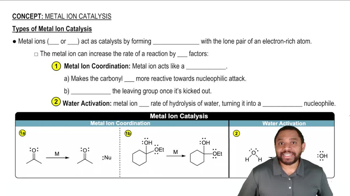Predict the product of the following substitution/addition reactions involving phenoxides.
(a)

 Verified step by step guidance
Verified step by step guidance Verified video answer for a similar problem:
Verified video answer for a similar problem:



 3:50m
3:50mMaster The Mechanism of Williamson Ether Synthesis. with a bite sized video explanation from Johnny
Start learning